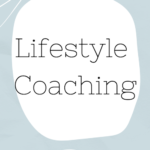November 30, 2021
How to Set Boundaries in 5 Easy Steps

- Know Your Why: Your why is your truth. It’s the reason you are implementing changes in the first place. Identify your why before setting your boundary. Your why can be anything as long as it is authentic to you. It may be so you have genuine connection with others, so you feel free to be yourself, so you feel free to say no, or so you feel safe to be yourself. When others express discomfort with your decision, it’s easy to forget your boundaries are to keep you feeling and running your best. If you are met with resistance from people around you remember this. Your boundaries are not to hurt anyone. It can be easy to fall back into old habits and please others when your boundaries are questioned. It’s okay to consider others’ concerns but don’t let it trump your truth. This is when it is important to remember your why. Write it down on a piece of paper or save it on your phone so that when you feel like you’re going to let your boundaries slip, you can be reminded of why you implemented them in the first place. Remember you’re doing it for you, so you feel your best and can fully show up in your life. You’re not doing it to inconvenience or hurt anyone else. True relationships that are genuinely for you, will be better because of it. Let your truth be your light house through the discomfort of growth.
- Clear Communication: Communicate your boundaries clearly to others. Communicate when both you and the other parties’ emotions are not heightened. Speak slowly and in a low tone. Avoid blaming the other party or using “you” statements. Putting blame on others and statements using the word “you” tends to make people defensive. Speak in terms of yourself. Use “I” statements. Communicate how you feel and what you need to do for yourself.
- Get clear on what you can and cannot be flexible in. Just because you set a boundary does not mean that things will never change. Both circumstances and people are constantly changing. What once was, may no longer be. Determining what you can and cannot be flexible with may take trial and error. There may be some areas where you can be flexible and work with others and there will be some areas where you cannot. Both are valid. Notice what leaves you feeling your best.
- Stick to it. Especially at first, it’s going to be hard to stick to your boundaries. New things almost always cause discomfort. You may feel guilty and want to fall into old habits. But remember, the way things were was not serving you, that’s why you’re setting boundaries in the first place. Make yourself stick it out for at least 48 hours. Usually after that time period the guilt and uncertainty of doing something new will have subsided and you’ll be feeling significantly better. It’s a great idea to bring awareness to how you’re feeling during that 48 hour period. Journaling your thoughts and feelings is a great way to become aware of your feelings.
- Evaluate and make changes based on how you feel. After a few weeks of living with these new boundaries, take stock of how you feel. See what, if anything, has to be tweaked and how you are feeling about the changes you’re making. Remember the goal is to make you, and as a result your relationships, feel their best!
